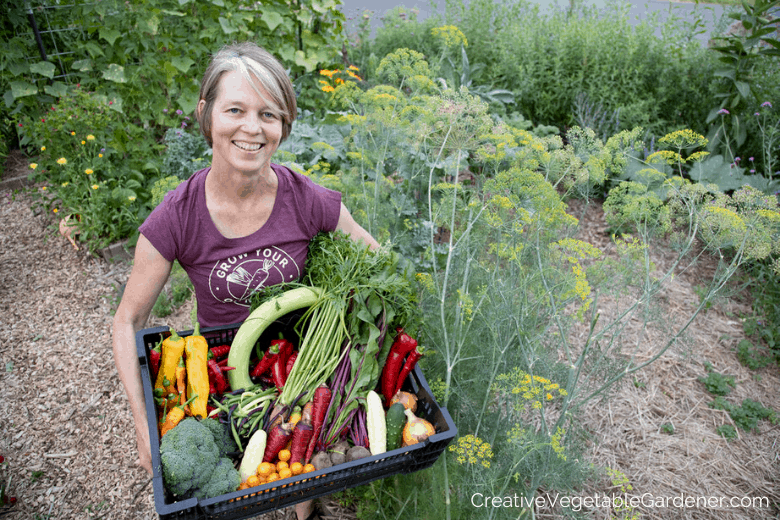
- This post contains affiliate links.
I understand the temptation to till your garden. There’s something in all of us gardeners that leaps with joy when we see a freshly turned bed. That rich, dark, blank canvas beckons us to come on over and work our vegetable magic.
We imagine ourselves gently planting a seedling in the fluffy soil with no straining or digging necessary.
But, garden fantasies aside, tilling the garden every year is a terrible idea in practice. Not only are you destroying the soil structure and bringing weed seeds up to the surface – you’re also creating more work for yourself.
I’m going to save you from this horrible fate by sharing why you should establish a no till garden and exactly how to do it.
Truth: I’ve gardened for 20 years and have never tilled my garden. And it’s one of the most amazing and productive gardens I’ve ever seen.
All the Reasons Why You Shouldn’t Till
The photo above is from the community garden where I had a plot for 10 years. We were in charge of our own garden plots, so of course I didn’t till. But, lots of people around me did, so I got to see what happened each year.
It usually wasn’t good.
We get a lot of spring rains where I live in Wisconsin, so often right after someone would till their garden we’d get a huge rainstorm which would result in their soil becoming compacted and eroded and often their seeds were washed away. The above photo was taken after one of those storms.
It was painful to see and reinforced my decision to stick to a no-till garden.
There are many important reasons not to till your garden. Here are the top three you should keep in mind as a home gardener.
You’re destroying the soil structure.
Here’s an excerpt from the USDA’s Natural Resource Conservation Service website:
…“tillage destroys a soil’s physical properties and therefore the soil’s ability to function properly. Tillage destroys and/or depletes the soil’s aggregate stability, structure, pore space, water holding capacity, infiltration, permeability, gaseous exchange and nutrient storage ability.”
These are all incredibly important factors that influence the health and productivity of the plants growing in your garden. If you don’t have healthy soil, it’s impossible to grow plants that are as big and productive as they should be.
I like to think about what’s underneath the soil surface in relation to snorkeling. The first time I went to Hawaii and put on a pair of goggles and fins and started looking below the ocean’s surface I was blown away. Sea turtles! Rainbow fish! Pastel coral!
Wow! There was an entire world under there I had never seen before.
Similarly, what’s underneath the surface of your garden soil is an entire world as well. A single teaspoon of rich garden soil can hold up to one billion bacteria, several yards of fungal filaments, several thousand protozoa, and loads of nematodes.
These bacteria and fungi have evolved to have complex and beneficial relationships with the plants we grow. Some of them convert nitrogen into a form that’s available to plants (and vegetable plants need a lot!), others form a relationship with the plants’ roots to help with their ability to access nutrients in the soil, and still others hold soil particles together and prevent erosion.
That’s a lot of important roles being fulfilled by millions of tiny things we can’t even see with the naked eye.
And what do you think happens to this rich web of life (often called the soil food web) when you run spinning blades through it? It’s like a tornado that destroys house and home. Devastation.
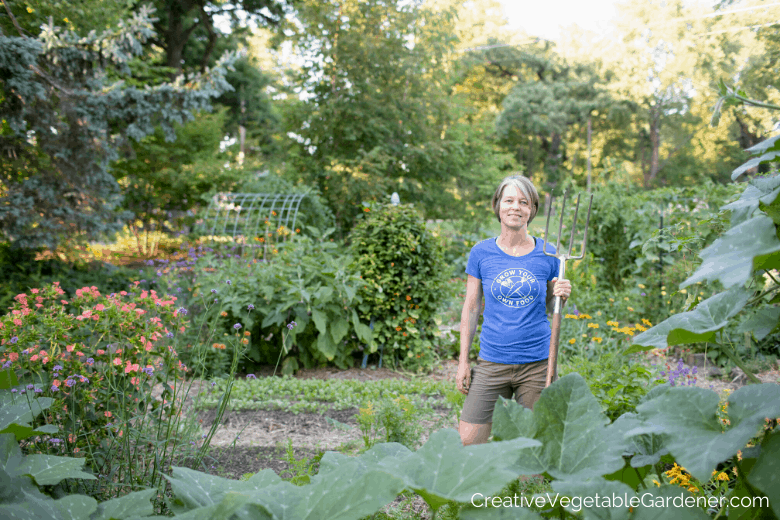
You’re bringing weed seeds up to the surface.
Personally, I hate weeding and think it’s a completely avoidable waste of time. I do very little over the season in my own garden.
The act of tilling brings many weed seeds up to the surface of the soil – just where they like it! The sun and warmth at the top encourage them to germinate and start growing.
If you left them where they were, in the cool and dark depths of the soil layers, they’d be much less likely to germinate and start outcompeting your vegetable seeds and seedlings.
You’re making more work for yourself.
Not only are you potentially exposing more weed seeds, resulting in many more hours spent weeding, you’re also creating more work in other ways.
In spring, when I’m ready to start planting in my no-till garden I simply walk outside, grab my seedlings, dig a small hole in my garden bed, sprinkle in some organic garden fertilizer, pour in some water, and plant the seedling. In less than a minute I’m done.
There’s no wrestling with machinery, waiting for the rainstorms to pass and the garden to dry out so I can till, or laying out my garden beds and paths again and again.
If you want to see exactly how I plant so quickly in spring without a ton of preparation, check out this article and video filmed right in my garden prepping spring garden beds for planting.
What to Do Instead of Tilling (Hint: A No Till Garden)
Now that we’ve covered all the reasons why you definitely shouldn’t be tilling, let’s talk about what to do instead.
Establish permanent beds and paths
After 20 years of growing my own food, designing many gardens, and working with thousands of gardeners, I passionately believe that growing vegetables in some type of raised garden beds is the best route for most people.
In this style of gardening, you work to establish permanent beds and paths in your garden. Your garden has an overall design that doesn’t really change from year to year unless you want it to.
This is in contrast to the flat or farm style of gardening, in which you till up a large square or rectangle in your yard every season. You’re starting from scratch each time, having to reestablish where you plant and where you walk. It can be a lot of work. See photo above.
When you design your garden to include raised garden beds and established paths, you’ll find that the benefits far outweigh the drawbacks. Most of the benefits are the exact opposite of the drawbacks to tilling we discussed above.
You can read more about creating easy raised garden beds.
Better for your soil health.
Having a permanent garden design means it’s very clear where your beds and paths are located. That encourages you to stay on the paths when walking and working, and you’ll be less likely to step into the garden beds.
Walking and stepping on the soil you’re growing food in will compact it over the long term. Keeping yourself in permanent aisles will help maintain loose soil in the garden beds, which will make it easier to plant seeds and plants, remove weeds, and provide space and air for your plants’ roots to grow.
You can also concentrate fertility on those garden beds by consistently adding mulch, compost, cover crop, organic garden fertilizer, and manure to increase the nutrients available to your plants.
And there’s no need to till these beds which will keep the soil food web in tact and your plants thriving.

Less work in spring.
When you have a permanent garden design, you don’t have to start over from scratch every year. In contrast, when you grow food in the flat style, every spring you have to wait until the soil dries out, get out your tiller, and then lay out your planting beds again.
With an easy raised garden bed there’s not much prep you need to do to start planting in spring. If you cleared out and mulched your garden in fall, all you have to do is wait for the soil to warm up, and then walk out and start planting.
There’s no wrestling with machinery, digging or flipping over soil, or really any backbreaking work at all!
Less maintenance over the long term.
One of the great things about having permanent beds and paths is you can easily keep the beds and paths mulched all year round, which will go a long way towards reducing the amount of weeds that grow.
And that means many less hours you need to spend weeding in your garden. You can read my passionate plea to keep your soil covered in this article about vegetable garden mulch.
Creates a more attractive garden.
Permanent raised garden beds create organization and structure in your garden. These are not bad things to have in a vegetable garden because they lend to the overall attractiveness of your garden.
I like to think of the raised garden beds as the canvas. Once they’re constructed, you can take that blank canvas and use the vegetable plants and flowers to “paint” on it to create beautiful and interesting combinations of colors, textures, and heights.

How to Set Up a No-Till Garden
Two common complaints about vegetable gardens are that they’re ugly and it takes a lot of work to grow your own food.
I can guarantee that taking the time to create established beds and paths this season will drastically reduce your labor each year, and create a healthier and more beautiful garden.
I created an entire article that walks you through the process I used to build my current garden from scratch when we purchased our current house.
I show you three different options for creating easy raised garden beds, discuss the pros and cons of each style, and share the supplies you’ll need. Go check it out here.

Other Things Not To Do To Your Soil
Since we’re on the subject of creating a healthy soil ecosystem, let’s discuss some other actions to strike from your garden practices.
Don’t Walk on Your Soil
Your garden beds should be for planting, never for standing or walking. That’s what the paths in your design are for. When designing your garden beds, make sure they’re no more than 4 feet wide or you’ll have trouble reaching into the middle and will be tempted to put a foot on that nice, loose soil. No!!!
Never Work with Wet Soil
After a large rainfall, let your soil dry out a bit before disturbing it with forks, rakes, or other tools. Working your soil when it’s wet can cause compaction, especially if you have clay soil.
Don’t Invert the Soil Layers with a Shovel
You don’t need to do a lot of heavy digging when you’re preparing your garden in spring. In fact, you shouldn’t be using a shovel and inverting the soil layers.
Instead, if you’re planting seeds, simply loosen the top few inches of the soil. If you have soil that’s more on the clay side of the spectrum, you can use a broadfork to loosen the soil without inverting the natural layers.
More on prepping spring garden beds for planting.
No Bare Soil
Bare soil is vulnerable to erosion from wind and rain, drying and cracking from heat and sun, and also invites lots of weed seeds to germinate.
This is my #1 tip for organic gardeners! Keep you soil covered with mulches and cover crops as much as possible. Read more about vegetable garden mulch.

Favorite Tools for No-Till Gardening
The money you save on not having to own or rent a tiller you can spend on quality garden tools that will help you build and maintain an amazingly productive no-till garden.
Digging Fork
I not only have one, but two digging forks hanging in my garage I love them so much. That’s why this tool is #1 on my “best garden tools” list.
When I used to run a youth farming program I would forbid the students from weeding unless they had digging fork in their hand. It’s the best tool for popping weeds out by the roots.
I also use it to harvest carrots and potatoes, loosen up garlic before harvesting, and break up clods of my clay soil before planting.
Broadfork
This tool is a splurge, but if you’re an enthusiastic no-till gardener like me, it’s worth it! I treated myself to a broadfork one year for my birthday (I know, I’m a garden nerd!) and use it almost every time I prep a garden bed for planting.
I like it because it allows you to aerate and loosen the soil with out mixing up the soil layers like a tiller does. In my article and video about prepping spring garden beds for planting you can see me using my broadfork in the video.
Find out more by clicking on the image.
Hard Rake
It’s best not to disturb the soil of your garden beds too much, but a hard rake is very handy when smoothing out the top of the beds when preparing to plant small seeds like carrots, beets, and lettuce.
This tool is always the second one I grab after the digging fork.
I found both of mine at garage sales, but this Fiskars version would look great hanging next to their version of the digging fork in your garage!
Find out more by clicking on the image.
Trowel
Wow! There are so many different trowels out there and I’ve tried many of them. During my garage cleaning frenzy recently I got rid of every single trowel I owned except for this one.
It’s the best, hands down. I will never buy another trowel again. And in fact, I’ve had this one for over 12 years and it’s holding up great.
I like that it’s stainless steel and not plastic. I prefer a more narrow trowel instead of wider designs. The red handle makes it easy to find in the garden when I inadvertently put it down somewhere random.
I use it for everything from planting seedlings in spring to planting flower bulbs in fall.
Made in the US.
Find out more by clicking on the image.
Organic Fertilizer
After working with thousands of gardeners over the years, as well as having soil struggles in my last two gardens, I’m convinced that every gardener should be using organic fertilizer in her garden.
You can read more about it in this article about organic garden fertilizer.
The above post (with accompanying video) teaches you what to look for in an organic fertilizer when you go shopping. Here’s a brand you can start with.
Mulch
My garden beds are always completely covered in mulch all year round unless I’m waiting for seeds to germinate. The mulch retains moisture so I don’t have to water as much, keeps weeds down so I don’t have to spend hours on my knees clearing out unwanted plants, and breaks down to add organic matter to the soil. There’s not really anything not to love about mulch!
Read how I use it and which kinds I recommend in this article: Why mulch is the ultimate garden tool.
Creating a no-till garden takes some work and planning up front, but in subsequent years you’ll reap all of the rewards we’ve talked about in this article. If you’re someone who’s been tilling your garden, consider experimenting and turning at least some of your space into a no-till area and compare the results. I doubt you’ll regret it!
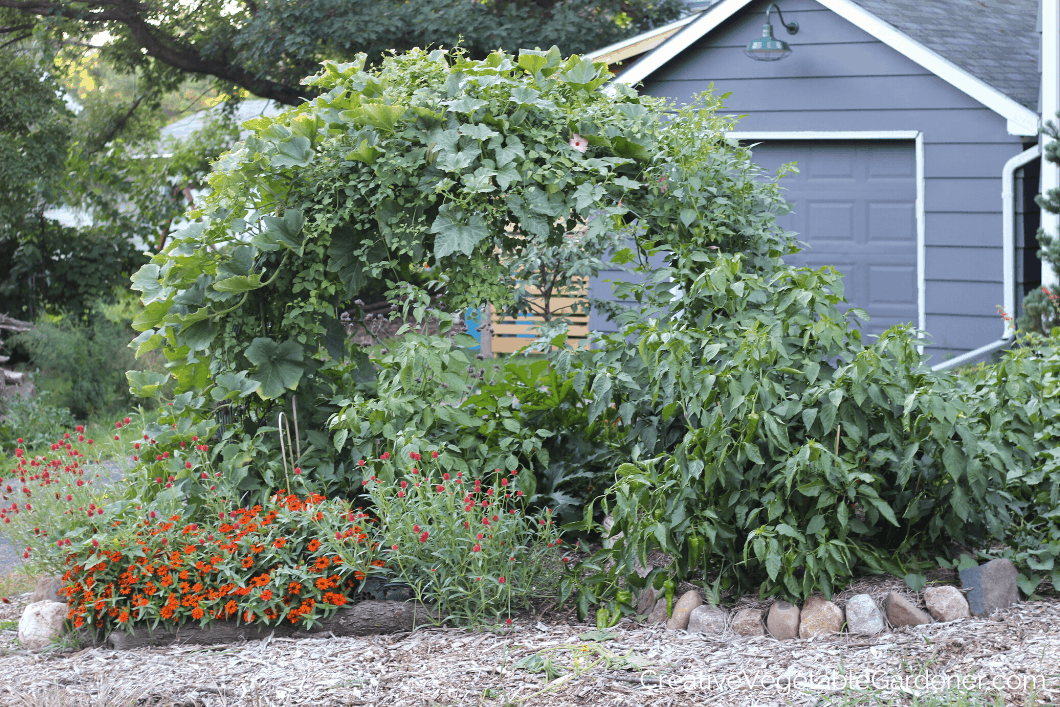
Additional Resources For Getting Better Results
Find my favorite gardening supplies, varieties, books, tools and more in my Amazon storefront.
MASTERCLASS
In each season of my Masterclass – Success In Every Season: Get Better Results From Your Garden All Year Long – we focus on exactly what you need to know to be successful. The seasons build upon one another (just like in your garden!) to create a complete toolkit of skills that will set you up for a more joyful gardening experience
When you make smarter decisions in your garden, you end up having more success, which means gardening is a lot more fun. Read more about it here.
BOOKS
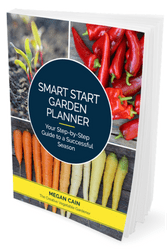
Set yourself up for a successful season with the Smart Start Garden Planner. It keeps garden planning practical, down-to-earth, and fun!
.

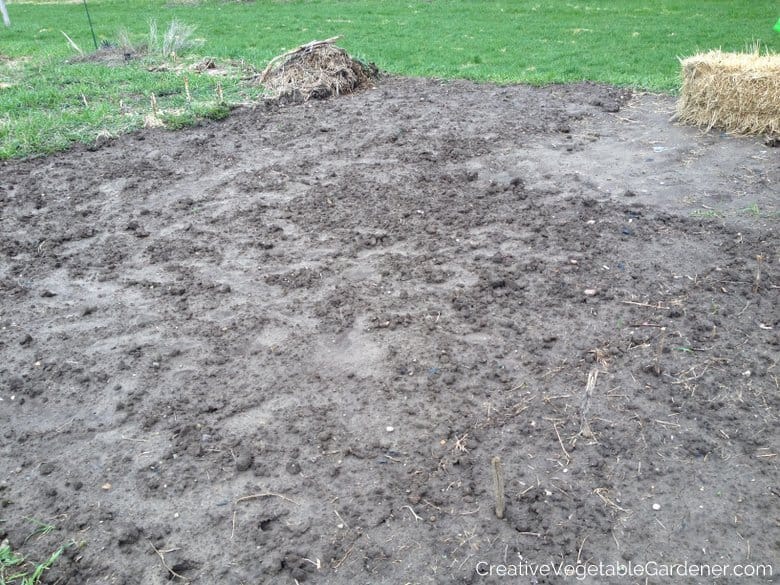
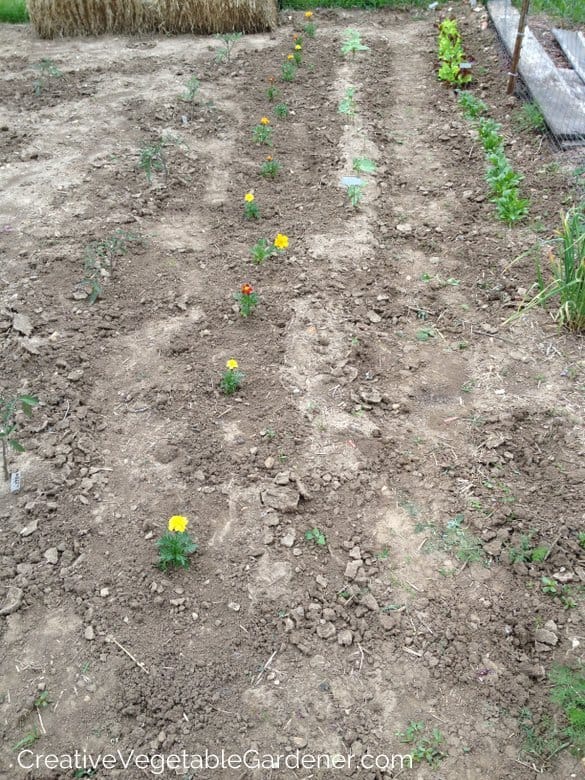











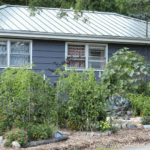
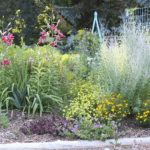
Comments
After reading yours and other information about tilling. I am not going to till my garden, as much. I will have permanent bed areas and a well define walkway. Also going to do cover crop and mulch. I really like reading your blog.
Awesome, Tenshi! That’s what I love to hear! I think you’ll find it to be a lot less work as well.
What do you use to mulch the beds of a vegetable garden?
Hi David- You can read all about mulching in this post: https://www.creativevegetablegardener.com/vegetable-garden-mulch/
Hi,
Very good advise. I like this part, “just dig a hole for your seeding” very simple.
One thing I like to know do you put any fertilizer in the hole?
Dennis
Dennis – Great question! I will often add a handful of high quality compost into the holes with my seedlings. Because I’ve had soil nutrient issues in the past I also have a mix of amendments I add to the planting hole.
I was set for winter, left my spinach and Kale going, best part is no holes in the leaves now, beautiful plants, but this morning when I went to pick, a rabbit jumped out of the straw I have, ready to finish when we get a decent frost. They love the small spinach leaves. Snow predicted for Friday, what a wonderful fall we have had.
Sue – If you’re having rabbit issues you could try using some row cover to protect the plants from hungry winter rabbits. It has been a great fall so far here in Madison. But, I think it’s time for winter!
On this beautiful fall day I harvested broccoli, swiss chard for my quiche, fresh parsley and there remains the Brussel sprouts. Newly dug potatoes and squash are in baskest in the shed. Fresh veggies for days to come.
That’s so wonderful, Jean! It’s so fun to have food at this late time of the year. The late fall garden is actually my favorite time of season. Thanks for sharing!
[…] Stop Tilling Your Vegetable Garden! – From The Creative Vegetable Gardener […]
[…] Stop Tilling Your Vegetable Garden […]
[…] Stop Tilling Your Vegetable Garden […]
We compost all year and in the spring we put most of this compost onto the garden bed and then till it into the soil. After many years of doing this our soil is very rich for growing the veggies. How can we mix the compost into the soil if not by tilling it. (We have a square garden patch, but make raised rows for each type of plant eg. tomatoes , zucchini, onions etc with an mulched path between each row.)
Hi Carolyn- You don’t really need to mix the compost into the soil with a tiller. You can just top dress the soil with a few inches of compost every year. Or use it as mulch after you plant in spring.
I have been studying a program in Africa which is a Zero tillage program. Started by Brian Oldreive he started the program on his own farm and now he has gone on to help hundreds of people. Farmers who have adopted this method produce 40% more cereal than farmers who plough the land, It was originally called Farming Gods Way, They changed the name of the program, as it was felt that, you didn’t need to be a Christian, to participate in the program. Visit their website to see the wonderful work they are doing
http://www.fffzimbabwe.org/
My garden was tilled for several years. How can I switch over? Do I need to start a new garden, or can this one be saved?
You can stop tilling at any time. No need to start a new garden, just stop tilling!